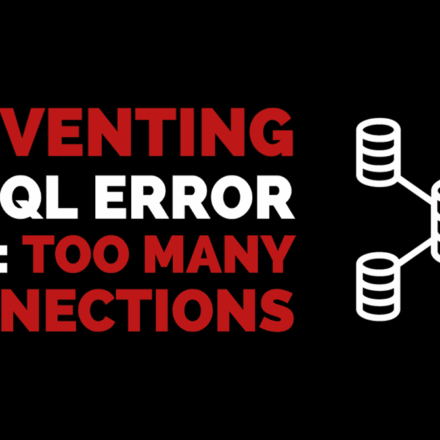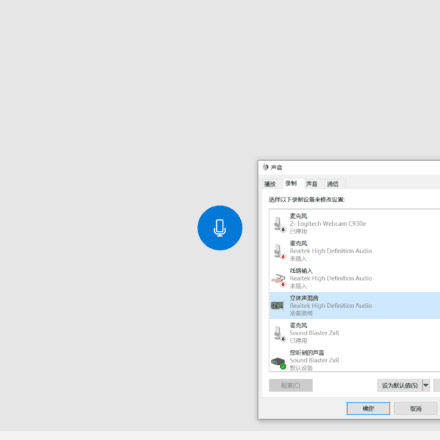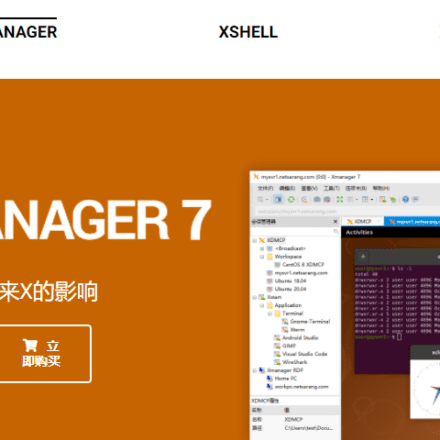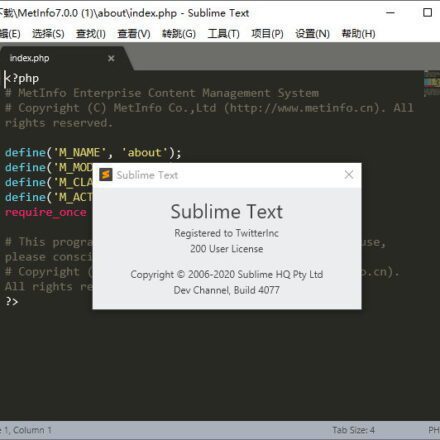精品软件与实用教程
当网站遇到 SQLSTATE[HY000] [1040] Too many connections 怎么办?
这个错误表示 MySQL 服务器的当前连接数超过了配置的最大允许连接数(默认 151),导致新连接被拒绝。通常发生在高并发网站(如 WordPress、Laravel)中,原因包括应用未及时释放连接、突发流量或配置不足。别担心,它通常可快速修复,但需结合监控避免复发。
在 MySQL 世界中遇到的最常见错误之一是臭名昭著的错误 1040:
![SQLSTATE[HY000] [1040] Too many connections 解决方法-1 SQLSTATE[HY000] [1040] Too many connections 解决方法-1](https://uzbox.com/wp-content/uploads/2025/10/20251019-rvqrf.png)
实际上,这意味着 MySQL 实例已达到其允许的最大客户端连接数限制。在连接关闭之前,服务器将不会接受任何新连接。
我想讨论一些防止这种情况的实用建议,或者如果你发现自己处于这种情况,如何恢复。
精确调整 max_connections 参数
此设置定义了 MySQL 实例可接受的最大连接数。设置最大连接数的“原因”取决于服务器的可用资源和应用程序的使用模式。允许不受控制的连接可能会导致服务器崩溃,这可能比阻止进一步的连接“更糟糕”。Max_connections 是一个用于保护服务器的值,而不是修复与劫持连接相关的问题。
与服务器的每个连接都会消耗固定数量的开销,例如管理连接的“线程”和用于管理连接的内存,以及可变资源(例如用于创建内存表的内存)。测量应用程序的资源模式并找到超过该连接数的危险点非常重要。
Percona 监控和管理 (PMM) 可以帮助您找到这些值。查看内存使用模式、正在运行的线程,并将它们与连接数关联起来。PMM 还可以显示连接活动的峰值,让您了解距离阈值的距离。请根据服务器的资源限制进行相应的调整。
下面看到的是一个具有非常稳定的连接模式的服务器,并且最大使用量和最大连接数之间有很大空间。
MySQL:如何修复Too many connections 错误:(HY000/1040):连接数过多
首先调整mysql配置文件,然后重新启动MySQL
# # These groups are read by MariaDB server. # Use it for options that only the server (but not clients) should see # this is read by the standalone daemon and embedded servers [server] # this is only for the mysqld standalone daemon [mysqld] # # * Basic Settings # #user = mysql pid-file = /run/mysqld/mysqld.pid basedir = /usr #datadir = /var/lib/mysql #tmpdir = /tmp # Broken reverse DNS slows down connections considerably and name resolve is # safe to skip if there are no "host by domain name" access grants #skip-name-resolve # Instead of skip-networking the default is now to listen only on # localhost which is more compatible and is not less secure. bind-address = 127.0.0.1 # # * Fine Tuning # key_buffer_size = 1024M max_allowed_packet = 1024M thread_stack = 192K thread_cache_size = 1024 table_open_cache = 4096 tmp_table_size = 1024M max_heap_table_size = 1024M open_files_limit = 0 myisam_recover_options = BACKUP max_connections = 10000 interactive_timeout = 60 wait_timeout = 60 #key_buffer_size = 128M #max_allowed_packet = 1G #thread_stack = 192K #thread_cache_size = 8 # This replaces the startup script and checks MyISAM tables if needed # the first time they are touched #myisam_recover_options = BACKUP #max_connections = 1000 #table_cache = 64 # # * Logging and Replication # # Note: The configured log file or its directory need to be created # and be writable by the mysql user, e.g.: # $ sudo mkdir -m 2750 /var/log/mysql # $ sudo chown mysql /var/log/mysql # Both location gets rotated by the cronjob. # Be aware that this log type is a performance killer. # Recommend only changing this at runtime for short testing periods if needed! #general_log_file = /var/log/mysql/mysql.log #general_log = 1 # When running under systemd, error logging goes via stdout/stderr to journald # and when running legacy init error logging goes to syslog due to # /etc/mysql/conf.d/mariadb.conf.d/50-mysqld_safe.cnf # Enable this if you want to have error logging into a separate file #log_error = /var/log/mysql/error.log # Enable the slow query log to see queries with especially long duration #log_slow_query_file = /var/log/mysql/mariadb-slow.log #log_slow_query_time = 10 #log_slow_verbosity = query_plan,explain #log-queries-not-using-indexes #log_slow_min_examined_row_limit = 1000 slow_query_log = 0 # The following can be used as easy to replay backup logs or for replication. # note: if you are setting up a replica, see README.Debian about other # settings you may need to change. #server-id = 1 #log_bin = /var/log/mysql/mysql-bin.log expire_logs_days = 2 #max_binlog_size = 100M # # * SSL/TLS # # For documentation, please read # https://mariadb.com/kb/en/securing-connections-for-client-and-server/ #ssl-ca = /etc/mysql/cacert.pem #ssl-cert = /etc/mysql/server-cert.pem #ssl-key = /etc/mysql/server-key.pem #require-secure-transport = on # # * Character sets # # MySQL/MariaDB default is Latin1, but in Debian we rather default to the full # utf8 4-byte character set. See also client.cnf character-set-server = utf8mb4 collation-server = utf8mb4_unicode_ci # # * InnoDB # # InnoDB is enabled by default with a 10MB datafile in /var/lib/mysql/. # Read the manual for more InnoDB related options. There are many! # Most important is to give InnoDB 80 % of the system RAM for buffer use: # https://mariadb.com/kb/en/innodb-system-variables/#innodb_buffer_pool_size #innodb_buffer_pool_size = 8G innodb_buffer_pool_size = 40G innodb_buffer_pool_instances = 16 innodb_log_file_size = 12G innodb_flush_log_at_trx_commit = 2 innodb_flush_method = O_DIRECT innodb_io_capacity = 2000 innodb_read_io_threads = 8 innodb_write_io_threads = 8 innodb_thread_concurrency = 0 innodb_lock_wait_timeout = 10 innodb_concurrency_tickets = 5000 innodb_autoinc_lock_mode = 2 query_cache_type = 0 # this is only for embedded server [embedded] # This group is only read by MariaDB servers, not by MySQL. # If you use the same .cnf file for MySQL and MariaDB, # you can put MariaDB-only options here [mariadb] # This group is only read by MariaDB-10.11 servers. # If you use the same .cnf file for MariaDB of different versions, # use this group for options that older servers don't understand [mariadb-10.11]












